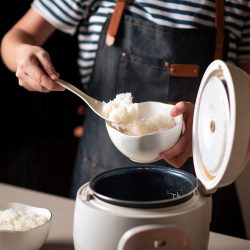Mashed potatoes are one of those side dishes that tastes best when it’s fresh. However, that doesn’t mean leftover mashed potatoes are doomed to be drab. Indeed, many reheating techniques could help your mashed potatoes taste more, well, tasty! So, if you’ve got some leftovers lying in your fridge, you should check out the research we’ve done on reheating smashed spuds.
The quickest way to reheat mashed potatoes is to put them in the microwave at medium heat in 60-second intervals. Keep checking and stirring your potatoes until they reach at least 165° F. If you don’t want to use your microwave, you could put your mashed potatoes into a 350° F oven until they reach an internal temp of 165° F.
Reheating mashed potatoes may not be as tricky as baking a soufflé, but there are tricks of the trade worth knowing about. By following the tips below, you could recreate the magic of fresh mashed potatoes with your leftovers.

What Is The Best Way To Heat Up Mashed Potatoes?
Most chefs recommend two methods for reheating leftover mashed potatoes: microwave or oven. Of these two, the oven is preferred if you have extra time. While it will take a bit longer, there’s less chance of uneven heating in an oven. Plus, putting your mashed potatoes in the oven is less maintenance than microwaving.
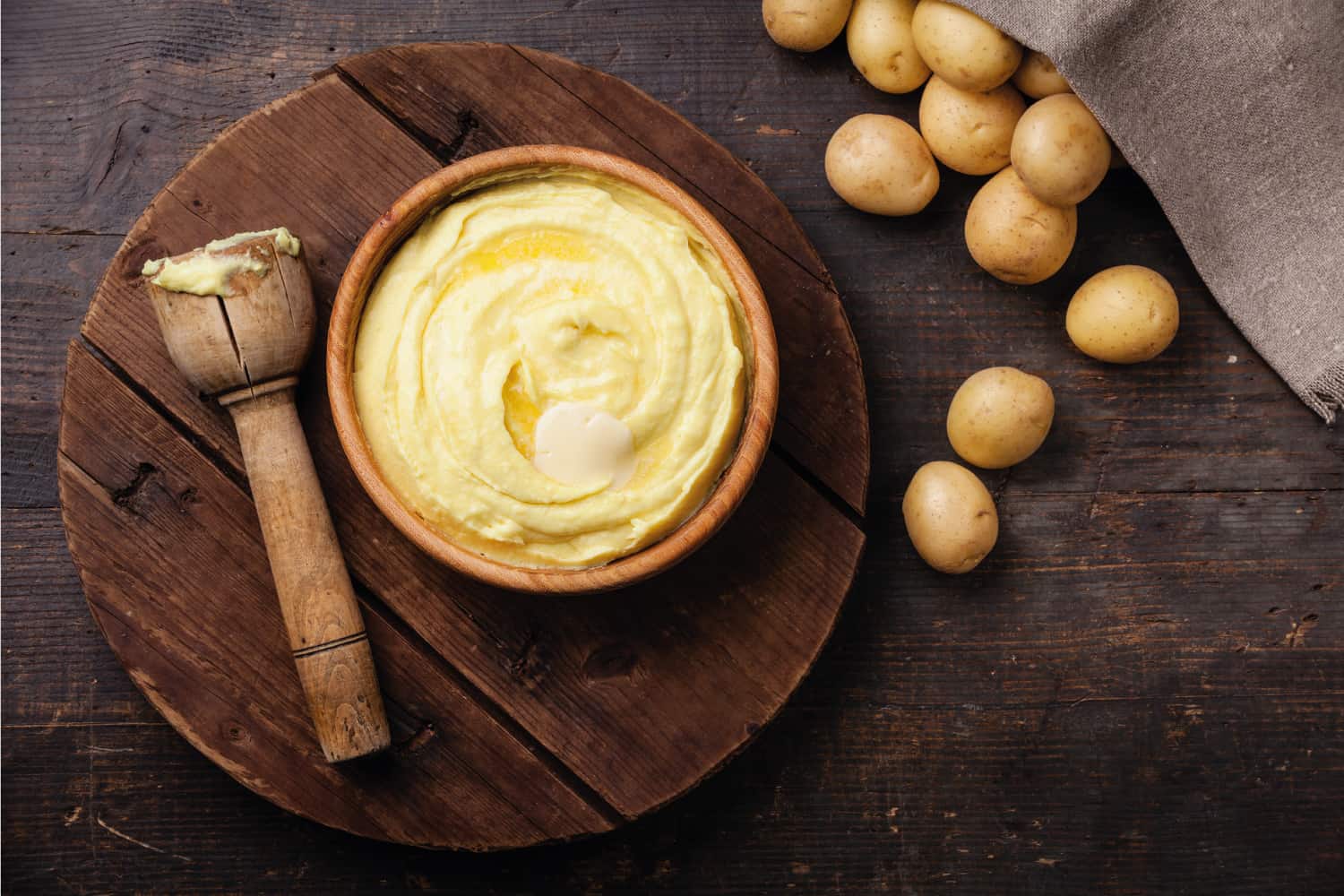
If you’re going to pop your spuds in the oven, you should first spread them into a baking dish so they cook at an even rate. At this point, you could add some butter or half-and-half to help mimic the original creamy texture. You should then place your potatoes in a 350° F oven for roughly 30 minutes.
Find out more on this Amazon link.
For more tips on heating mashed potatoes in the oven, be sure to watch this popular recipe from FoodWishes:
People interested in the microwave method should put their mashed potatoes in a microwave-safe bowl, sprinkle with water or dairy, and cover with plastic wrap. Next, put your mashed potatoes in the microwave at half-power for one minute and give your spuds a nice stir. Please keep repeating these steps until your mashed potatoes are thoroughly warm.
Be sure to watch this eHow video for more tips on microwaving mashed potatoes:
FYI: The ideal internal temperature for reheated mashed potatoes is 165° F. You should use a meat thermometer to check your mashed potatoes before serving.
Find out more on this Amazon link.
Can You Reheat Mashed Potatoes In The Microwave?
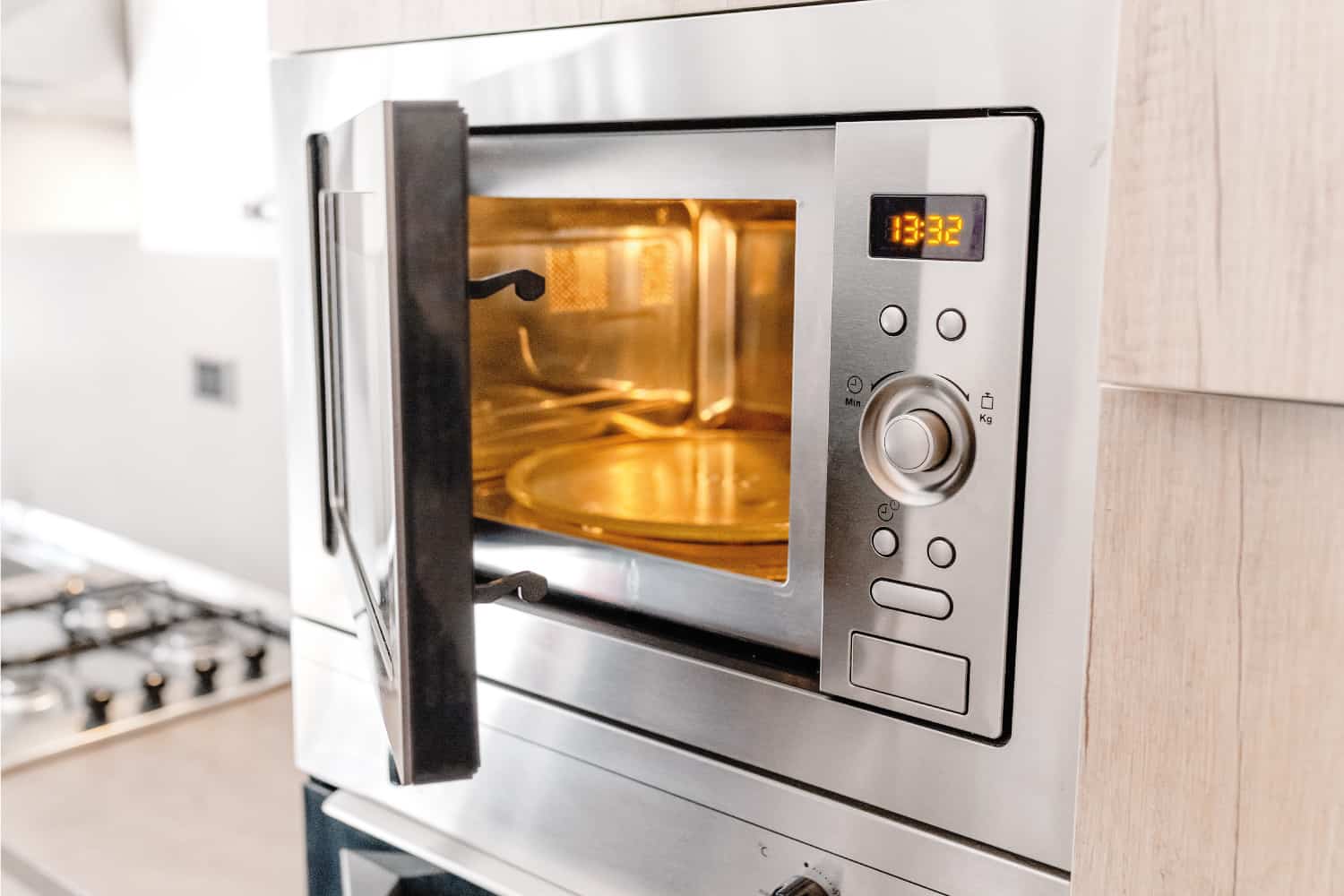
Microwaving mashed potatoes is an easy way to bring your leftovers up to temperature. Even if fancy chefs pooh-pooh the microwave, there’s no denying it’s the fastest way to heat this side dish.
Before nuking your spuds, be sure to place them in a microwave-safe container, add a pinch of milk or water, and cover your container with plastic wrap. Next, microwave your mashed potatoes for one minute on a lower-intensity heat setting, roughly 50% average power. Stir your mashed potatoes and continue heating for 30 to 60 seconds until you reach the perfect temperature and consistency.
Here’s a brief video demonstration of how to reheat mashed potatoes in the microwave:
How Do You Reheat Mashed Potatoes On The Stove?
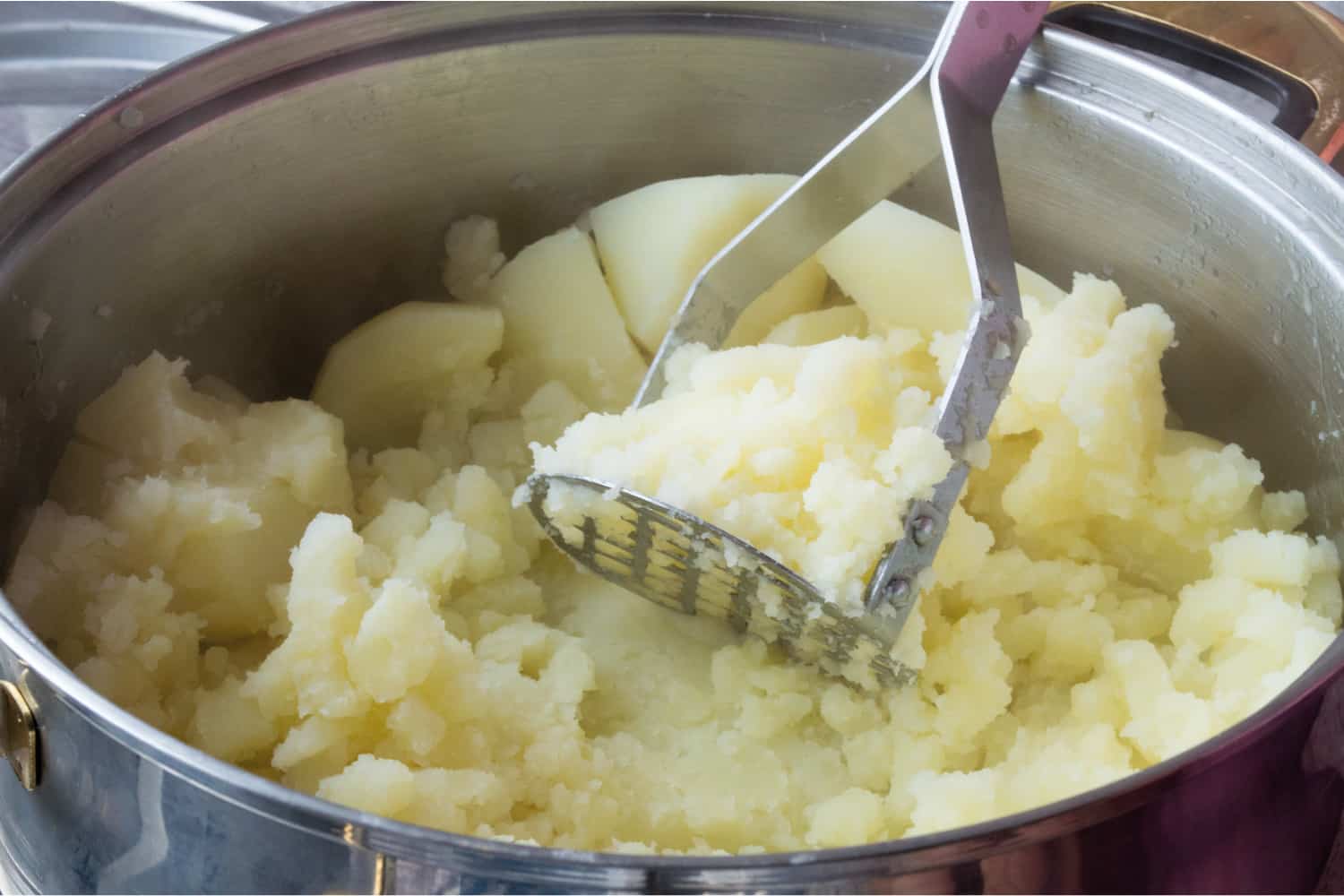
It’s OK to reheat mashed potatoes on the stovetop, but you have to be wary of potatoes sticking to the sides of your pan. Indeed, chefs who use this method say you should use a pan with a nonstick coating. You must also place your pan over the lowest heat setting and constantly monitor it.
Typically, it takes about 10 to 15 minutes for stovetop mashed potatoes to reach an internal temp of 165° F. Be sure to stay near your pot of mashed potatoes and give it a gentle stir about every two minutes. If you think your mashed potatoes need a little help loosening up, be sure to add a bit of milk to your pan.
If you’re not comfortable placing mashed potatoes directly into a pan, why not try a double boiler? Fill your glass bowl with mashed potatoes and your pot with about two cups of water. Put the pot over high heat until the water starts bubbling, then take the pot off the heating element, carefully place your bowl on top, and let the steam work its magic. Continue to stir until your mashed potatoes are creamy and reach a temp of 165° F.
Find out more on this Amazon link.
You could watch this YouTube tutorial to find out more about warming mashed potatoes in a double boiler:
If you’re new to cooking with a double boiler, please check out our guide: Bain-Marie vs. Double Boiler.
Can You Reheat Mashed Potatoes In A Slow Cooker?
Slow cookers may be the slowest way to reheat mashed potatoes, but they are a convenient option if you have the time. To use this method, put your thawed mashed potatoes in a crockpot, set it to low, and cover. To avoid clumping, be sure to stir your mashed potatoes every hour and add a little dairy, broth, or butter.
Typically, slow cooker mashed potatoes take about four hours to reach 165° F. Once this temperature is achieved, you could switch your setting to the warm setting until you’re ready to serve.
Find out more on this Amazon link.
How To Heat Up Frozen Mashed Potatoes?
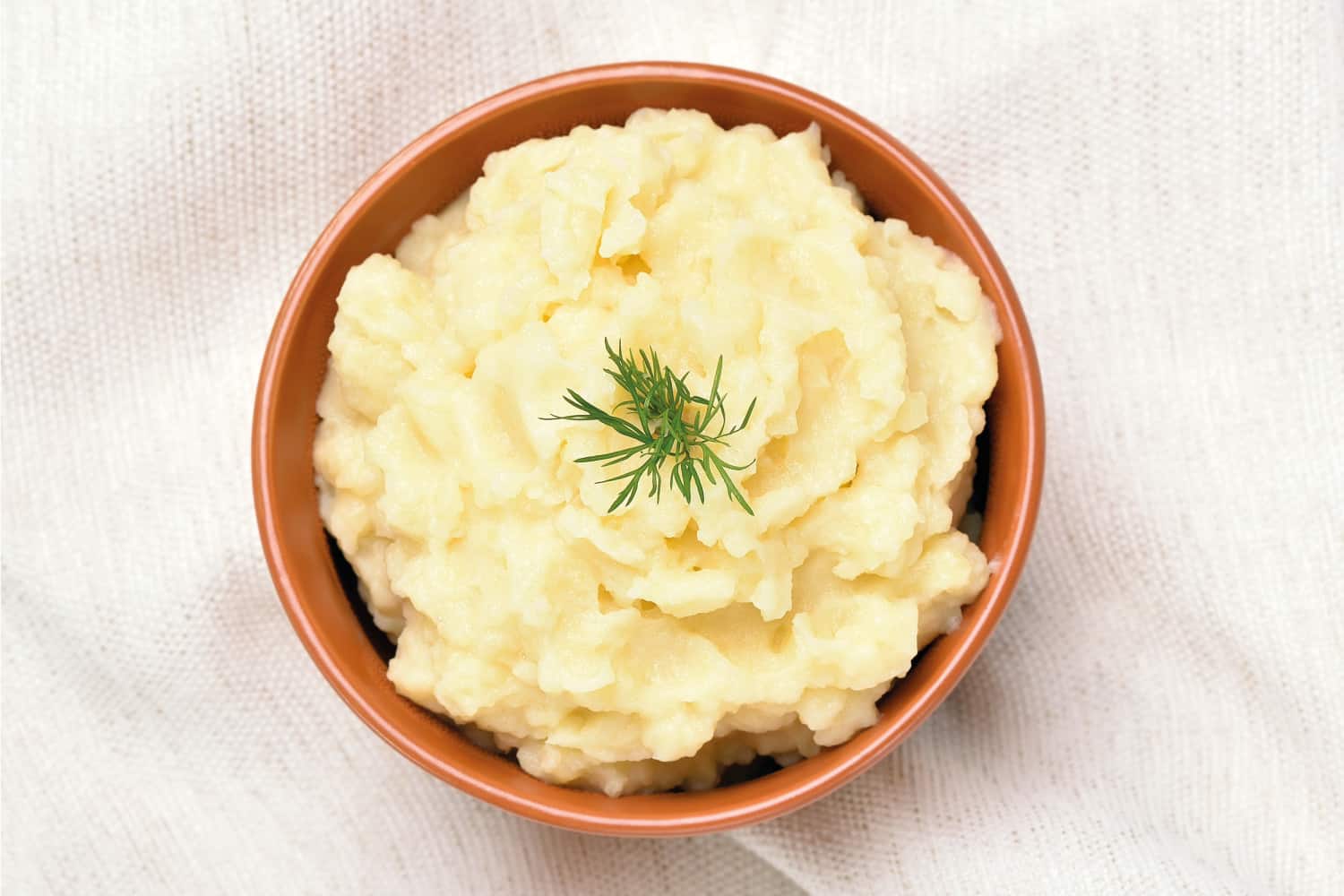
You can reheat mashed potatoes in many ways, but the most common are in the oven or microwave. Some people also use a bain-marie or a slow cooker to gradually bring their frozen mashed potatoes up to temperature.
The key with all of these strategies is to go low and slow. Choose the lowest setting on your slow cooker or stovetop, cut the power by 50% on your microwave, or set the oven for 350° F. Constantly stir your potatoes to check their temperature and texture.
While thawing your frozen mashed potatoes isn’t necessary, it’s a good strategy if you want to save some time. For the best results, transfer your frozen mashed potatoes to the fridge the night before you want to eat them.
FYI: Most chefs recommend adding a lot of dairy to mashed potatoes if you intend to freeze them. This ingredient helps potatoes retain their smooth texture even after a month in the freezer. But don’t fret if you’ve got a vegan in your household! KitchenSeer recently revealed the best Substitutes For Milk In Mashed Potatoes.
Is Reheating Mashed Potatoes Safe?
It’s safe to reheat mashed potatoes, but you have to store them properly in the fridge. Indeed, most experts say how long you keep your mashed potatoes at room temp has the most significant effect on their safety. When mashed potatoes are left in an environment between 40 and 140° F for longer than two hours, there’s a high chance harmful bacteria will thrive.
Unfortunately, once bacteria are in your potatoes, they’re virtually impossible to get rid of. Even the heat from your oven or microwave isn’t enough to kill these harmful microbes.
The best way to prevent food poisoning is to put any mashed potatoes you intend to save in an airtight container in the fridge ASAP. Of course, you should also wash and scrub your potatoes thoroughly before making mashed potatoes, especially if you like eating the skin.
Follow this Amazon link for more details.
If you have any doubts about the quality of your leftover mashed potatoes, it’s best to throw them away. Typically, mashed potatoes last about three to five days when stored correctly in the fridge.
Enjoy Masterful Mashed Potatoes—In The Microwave!
You could reheat mashed potatoes in many ways, but the two most common are microwaving or baking in the oven. However, you could also put your leftover mashed potatoes in a slow cooker, double boiler, or on the stovetop. Whichever method you choose, always ensure your mashed potatoes register 165° F before serving.
By the way, if you’re interested in which spud varieties make the best mashed potatoes, you’ve got to check out our post detailing the 20 Types Of Potatoes Every Chef Should Know.










